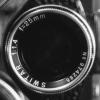-
Posts
17 -
Joined
-
Last visited
Daniel Lee's Achievements

Member (2/5)
2
Reputation
-
Daniel Lee changed their profile photo
-

First Sony A7R II user experiences - global shutter and native ISO 800?
Daniel Lee replied to Andrew Reid's topic in Cameras
They had a sharing agreement with that other sensor company that did global shutters right a little while ago? -

Sony has gone internal-4K crazy: A7RII, RX1004, RX10II
Daniel Lee replied to utsira's topic in Cameras
God damn, I'm almost done saving the A7s. Allegedly noise is significantly improved over the A7r? The A7r already has great noise performance, just not godly like the A7s, wouldn't significant improvement throw this into A7s levels? High res images, improved noise, and 4K, all in one? Is this best of both A7s and A7r in one, but with internal 4K not external? And improved AF via adapter?God damn. I need the A7s for my Japan trip Aug 31, not sure if I can get hands on A7r II by then? -
Generally speaking he's pretty wrong, that's even above the 1000:1 contrast figure Kodak gives for T-Max 100. Regular commonly available film peak resolution can range anywhere from an equivalent of 6mp to a bit over 80mp in 35mm format in lower contrasts, Henning Serger's test can get that upper figure out of many slide films and B&W, I get a bit less than him on most films, my lenses aren't as good as his, but I use wide angle lenses in my tests. Less common films can score way way past 175mp, reproducing this detail off the film is a major issue though. There's a few issues that may cause a good film lens to be poor on some digital cameras, but most of mine work really well on most digital cameras I've put on them. Film users shooting for detail will typically user bigger than 35mm formats though.
-
Sorry Andrew, but you have no idea what you're talking about in this case. Most of those kit lenses resolve far more than 6mp. I print my own resolution charts, even one based on various contrasts, they're always in line pairs, which you translate to line pairs per millimeter on the sensor or film, which you can translate into minimum megapixels to respresent this frequency if you so wish. EG; this is a downsized crop from the type of charts I use sometimes, I've got various. The height between the arrows on the chart is approx 3.3mm on the film negative, element 8 is resolved, which is 800 lines over 3.3mm which translates to 121 lp/mm(or 242 pixels/mm minimum) which is about the maximum this scanner will resolve off film, which translates to 50.6mp minimum. On a microscope it's over 150 lp/mm (over 80mp), this is just a Canon FD 28mm @ f/5.6 or f/8. I use this for digital cameras too. If we're talking about 6mp on APS-C, that's going to be around about 60 lp/mm iirc, I've never had any lens test that low that I've tried, and kit lenses are not the worst lenses I've tested, some older lenses I've tried are worse than any modern kit lens I've used.
-

Is Adobe Premiere to blame for banding in 8bit DSLR footage?
Daniel Lee replied to Andrew Reid's topic in Cameras
IIRC, you can edit in 16-bits in Premiere and output in 10-bits when exporting/rendering. Have you tried this? You can also edit in 16 and 32-bit in After Effects and output the same in various formats in the render queue. Have you tried pulling in your project with banding via Dynamic Link and turning on 32bpc and then rendering out to 8-bit video, 10-bit or 16-bit formats? http://blogs.adobe.com/VideoRoad/2010/06/understanding_color_processing.html -
I know it should be possible in a way to match the native look of one camera by profiling both and, and reversing one profile on top of the profile for other camera.
-

I can't make my mind up, maybe buy both.. GH4 & A7S..
Daniel Lee replied to Hitfabryk's topic in Cameras
This combination looks to have decent AF -
How are you guys correcting and grading? It doesn't seem hard to me and I get there with levels. I'm used to correcting raw film scans however.
-

Canon 1D C vs Sony A7S 4K - dynamic range - preview
Daniel Lee replied to Andrew Reid's topic in Cameras
As an 8-bit originating source it doesn't make much of a difference in determining things as long as it hasn't been fiddled with prior, it would just introduce potential artefacts, not clip DR or fiddle too much, if you're that worried about it, put up uncompressed 8-bit png. In the samples you have provided, in the log images, the one labelled as the Canon camera has the clipping, not the A7s. In the corner above the book in the log image sample, the Canon example is clipping, the A7s is not. The Canon sample appears brighter overall in the image, but this is just a case of the black point being essentially at a higher value - the blacks are simply lighter, the A7s sample does that too, just to a lower extent than the Canon sample, neither exhibit shadow clipping in the log sample image, but the Canon exhibits highlight clipping in the sample you have given. In regards to "you dont get x stops after grading!" you can if you want, it's a decision to decide the look of the image, but not an automatic given, 14 stops is low contrast, you generally have a reasonably punchy image in most things, which require a black and white clipping point, unless you want funky curves, masking or other things like that etc. -
 jcs reacted to a post in a topic:
Canon 1D C vs Sony A7S 4K - dynamic range - preview
jcs reacted to a post in a topic:
Canon 1D C vs Sony A7S 4K - dynamic range - preview
-
 jcs reacted to a post in a topic:
Canon 1D C vs Sony A7S 4K - dynamic range - preview
jcs reacted to a post in a topic:
Canon 1D C vs Sony A7S 4K - dynamic range - preview
-

Canon 1D C vs Sony A7S 4K - dynamic range - preview
Daniel Lee replied to Andrew Reid's topic in Cameras
The 1DC exhibits clipping where the A7s does not, but has a cleaner image than the A7s from what I can tell. -

Canon 1D C vs Sony A7S 4K - dynamic range - preview
Daniel Lee replied to Andrew Reid's topic in Cameras
That's asking for a grade rather than a correct, and I think that's a bit over saturated for a neutral base line. You can go further if you want, but it just becomes hyperactive in colour, and sacrifice hue accuracy to get that level of colour. etc -

Canon 1D C vs Sony A7S 4K - dynamic range - preview
Daniel Lee replied to Andrew Reid's topic in Cameras
The S-Log 2 A7s image is better than the 1DC Log image imho, the 1DC sample you posted has clipping, and it's simple and easier for me to correct the A7s image. And a bit more punchy The first all you need is levels settings. Rec.709 with just 1 pass of levels



